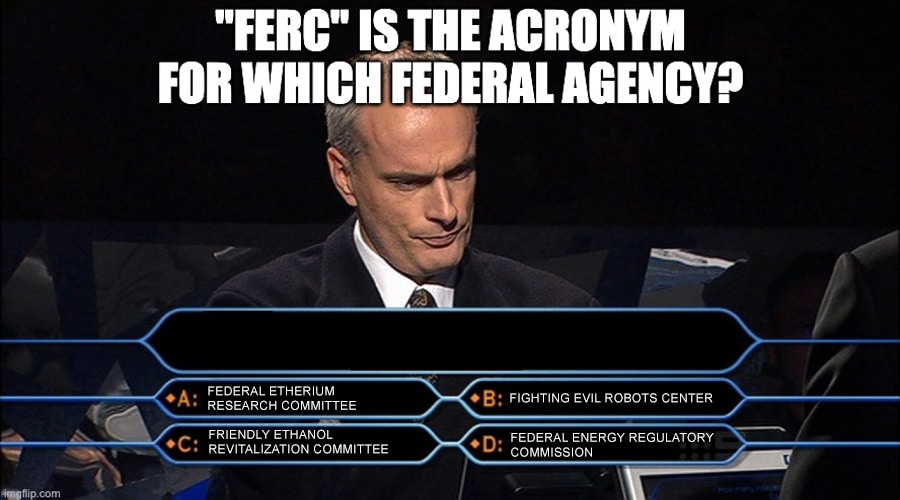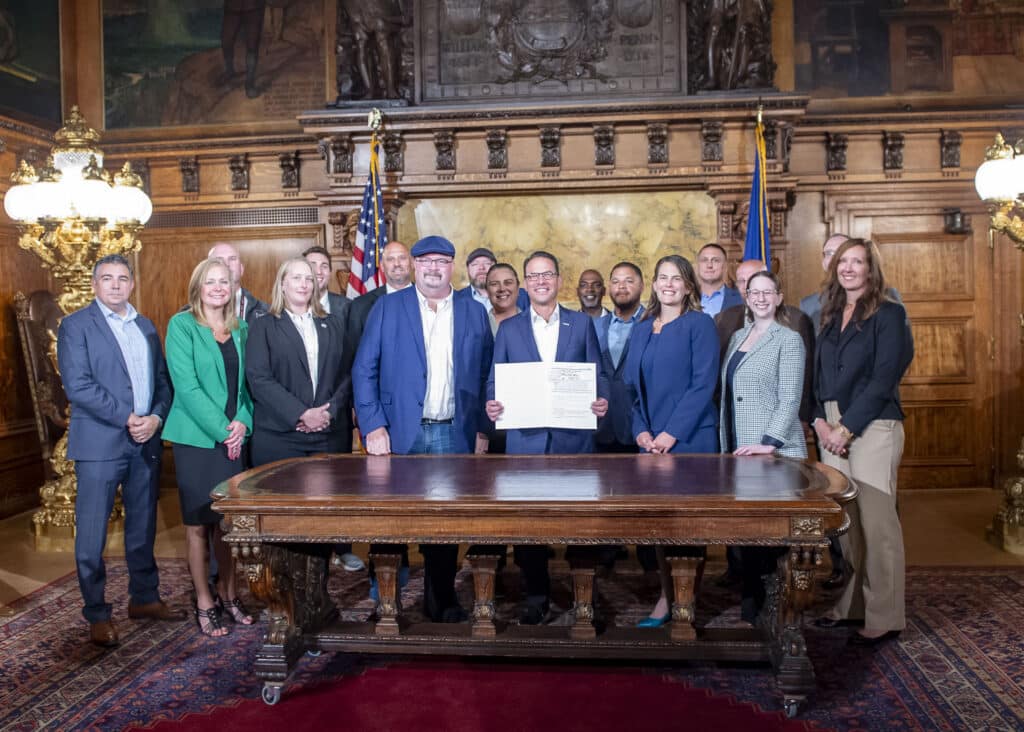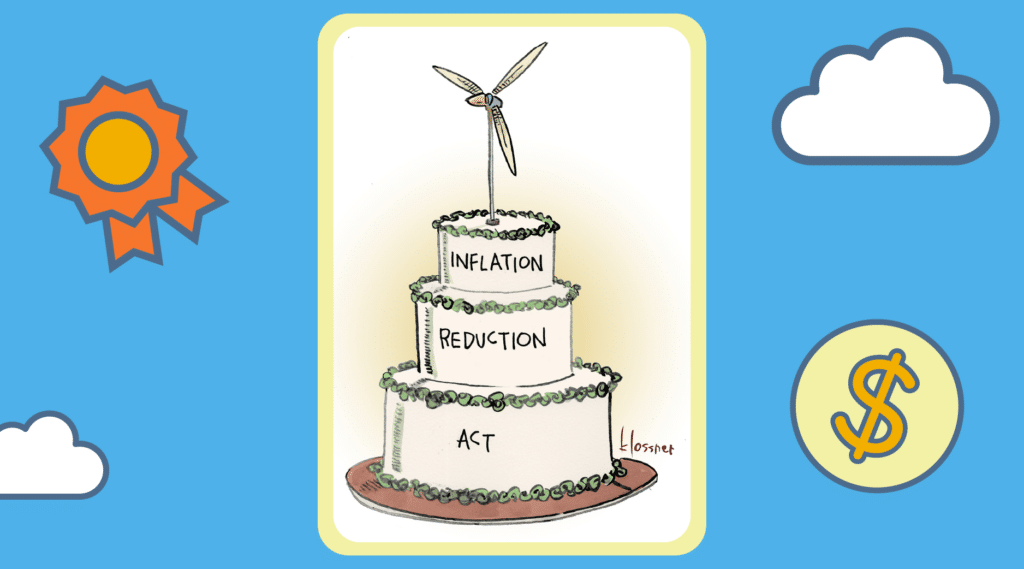If you had to name the most influential American government agencies when it comes to clean energy and climate, you’d probably be able to come up with a few acronyms from the federal alphabet soup: the EPA, the DOE, NOAA. (That would be the Environmental Protection Agency, the Department of Energy, and the National Oceanic and Atmospheric Administration.)
The list goes on: NASA, NHTSA… and of course, we can’t forget FERC. You know, FERC? The Federal Energy Regulatory Commission? Yeah, if that one was not right on the tip of your tongue, you’re not alone.
Unless you’re an electric grid operator, your news feed likely isn’t dominated by headlines about FERC and its decisions. But that doesn’t mean the agency isn’t worth your attention. It has a great deal of sway over how, and where, the clean energy transition takes place.
What is FERC, and what does it do?
FERC’s mission, which it puts front and center on its website, is to ensure “economically efficient, safe, reliable, and secure energy for consumers.” Among other tasks, the agency sets policies on how electricity is valued and traded on wholesale markets. It decides whether new interstate gas pipelines and liquefied natural gas (LNG) terminals can be built. It also licenses and inspects non-federal hydropower projects.
Basically, if electricity, fossil (“natural”) gas, or oil is crossing state lines, FERC likely has something to say about it. The agency is led by up to five presidentially appointed commissioners, no more than three of which can be from the same political party. Recent FERC decisions have related to gas pipeline projects in Louisiana and North Dakota; fees for customers with rooftop solar in Alabama; and the timeline to better integrate electric storage on the grid in the Midwest.
That ’70s Show
When FERC was established in 1977, replacing the Federal Power Commission, computers looked like small, cumbersome televisions, and more than 77 percent of the country’s electricity came from fossil fuels—especially coal.
More than four decades later, fossil fuel’s share of the power mix is down to 60 percent. Renewable energy’s contribution, once confined to hydropower, has doubled to 20 percent, with more than half of that now coming from wind and solar. Today, computers fit into our pockets, and our energy system is also increasingly digital—a fact highlighted by the recent Colonial Pipeline cyber attack, which led to gasoline shortages on the East Coast.
Even 30 years ago, “the times were a lot simpler,” said FERC Commissioner Richard Glick, whom President Joe Biden appointed as FERC chairman, in a 2019 interview. “It was a lot easier to tell what a wholesale transaction was and a retail transaction was, and where distribution facilities stopped and transmission facilities began.”
That’s a fairly wonky way of saying that power used to basically flow one way: From large generation plants across long-distance transmission lines to the distribution system that sends power to homes and businesses.
Enter the Modern Grid
Today’s grid is far more complex. Now power can flow in the opposite direction, from a home or business to the grid, often via rooftop solar panels. Customers can also interact with the electricity system through demand response programs, agreeing to lower energy use at peak times in exchange for some kind of a break on the utility bill.
Another transformation since “simpler times” is in the way electricity gets bought and sold. In the 1990s, many states moved away from the traditional model, where utilities owned both the power plants and the delivery systems. Now, about two-thirds of U.S. customers are served by deregulated markets, where power generators compete at the wholesale level and consumers can choose their retail electricity provider. (The nonprofit Resources for the Future has an excellent electricity markets explainer here.)
And finally, of course, there’s that other big change we’ve been contending with, more urgently than ever: The one that starts with “climate.” In FERC world, it’s not a given that greenhouse gas emissions or environmental impact will factor into any decision—even though the agency is charged with determining whether fossil gas projects are “in the public interest.” That seems kinda relevant to the planet being on fire—no?
Policies for a Clean Electric Grid
Glick and his fellow Democrat on the current commission, Allison Clements, have argued that FERC not only should, but is legally bound to, consider climate change impacts as part of its decision-making process. Until recently, however, the commission has sidestepped that responsibility, greenlighting dozens of pipelines as if climate change didn’t exist. It’s almost like being back in the ’70s, when U.S. public concerns about oil were more centered on how we could get more of it rather than what we were doing to the planet by burning it.
Each commissioner has a five-year term, and Republican Commissioner Neil Chatterjee’s tenure expires at the end of this month, though he has suggested that without the confirmation of an expected Democrat successor, he might not exit on time. Regardless of personnel changes in the short term, critics argue that FERC needs to get with the modern age. There have been some encouraging developments: The agency recently did include greenhouse gas emissions, for a change, in its assessment of a proposed pipeline project. It also created and filled a new position, senior counsel for environmental justice, aimed at ensuring its decisions do not unfairly affect historically marginalized communities.
On its blog, the Natural Resources Defense Council outlines other steps FERC can take to accelerate, rather than stall, the clean energy transition. Among them, the agency could update policies that prevent renewable generation resources from participating in capacity markets, where generators are paid to be available in case they are needed. It could also reform transmission planning—decisions about what types of lines are needed, and where, to carry electricity from where it is generated closer to where it is used—to improve delivery of renewable energy.
The part where you come in
There’s another noteworthy update at FERC, and this one directly involves you. The agency is finally establishing an Office of Public Participation, which will provide an avenue for communities to weigh in on what’s happening. If you really want to dive into the issues, the Sustainable FERC Project is a good place to start.















